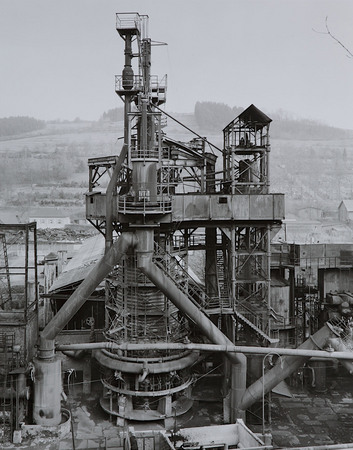Industrial archeologists

Bernd and Hilla Becher. Hochofen. Siegen, Hainerhütte, D 1961. © Stiftung museum kunst palast, Düsseldorf, Graphische Sammlung
Moscow, 10.04.2010—6.06.2010
exhibition is over
Ekaterina Cultural Foundation
21/5 Kuznetsky Most, porch 8, entrance from Bolshaya Lubyanka street (
opening hours: 11:00 - 20:00, day off - Monday.
Tel: +7 (495) 621-55-22
Share with friends
Presented by Museum Kunst Palast, Graphishe Sammlung, Düesseldorf
Supported by:
Goethe Institute, Moscow and
Volkswagen
For the press
Short biography Bernd and Hilla Becher Hilla Becher born in Potsdam on 2 September 1934 as Hilla Wobeser Received training as a photographer and subsequently worked as an industrial photographer in Hamburg and Dusseldorf. 1958-151;1961 studies at the Academy of Art in Dusseldorf, and establishment of a photography department at the Academy. Bernd Becher born in Siegen on 20 August 19311947-151;1950 training as a decorator 1953-151;1956 studies at the Academy of Arts in Stuttgart 1957-151;1961 studies of typography at the Academy of Art in Dusseldorf died in Rostock in 22 June 2007 1961 marriage of Bernd and Hilla Becher. 1964 birth of their son Max Becher. Bernd and Hilla Becher already commenced their joint photographic work while they were studying. Having been fascinated from their early childhood by the shape and function of the winding towers, reprocessing plants, furnaces, cooling towers and the timbered houses typical for the Siegerland area, they decided to photographically document these structures, which were exemplary for their time and frequently threatened with demolition. After all, over many decades the industrial plants were integral part of the landscape, and thus particular significance was attributed to heavy industrial structures. Bernd and Hilla documented objects in industrial areas of Germany, the Netherland, Belgium, France, Great Britain, and the USA. Apart from their photographic work, they also campaigned against the demolition of the coal mine Zollern II in Dortmund and gave an impulse for a modified perception of industrial buildings. The photographs are decidedly factual and restricted to black and white, thus giving on spectacular impression at first sight. The works▓ composition predominantly focuses on the structure and construction of the buildings, which are always free-standing and placed in the centre of the picture. The motifs are in perspective and frontal, but generally photographed under the same conditions of lighting and weather. The works are always devoid of people. The impressive -147;typologies-148; of industrial buildings thus created are highly distinctive in their pictorial language. Bernd Becher was appointed Professor of Photography at the Academy of Art in Dusseldorf in 1976. Jointly with Hilla Becher he taught at the Academy until 1996. This artistic consequence has a lasting influence on the international field of photographic art until the present day.




